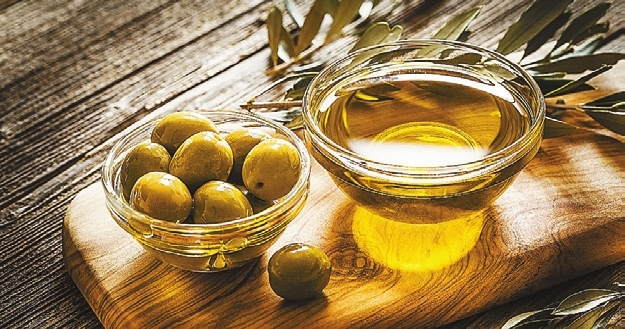
OLIVE oil is almost as old as time itself, and as versatile as a pair of jeans. A staple for frying and sautéing, it’s also delicious as a salad drizzle, a bread dip, and even as a main ingredient in a cake. Seriously, if you haven’t tried an orange or lemon olive oil cake, you’re missing out on a real treat. Olive oil is also an important part of the Mediterranean diet — an eating plan considered to be both heart-healthy and sustainable. But that bottle in your pantry may not be everything it claims to be. Many commercial olive oils are a mishmash of oils of varying quality from different countries that are sent to Italy for exporting just to have the “imported from Italy” bragging rights. Many others are a blend of freshly pressed oil and oil that has been sitting around for a while. Considering olive oil’s price and health benefits, it pays to be a smart consumer. Here’s how to make sure the oil you buy is the best it can be. You probably already know it’s a good idea to look for the phrase “extra-virgin olive oil” when you scan the shelves. The phrase means that the oil has been extracted directly from the olives without chemicals or heat, and has passed the standards of the International Olive Council. By contrast, “light” olive oil may seem healthier, but that simply refers to the color of the oil. Light olive oil has also been processed to help it withstand higher cooking temperatures. That may be helpful if you’re frying, but don’t expect to get the same health benefits as extra-virgin. Consumers need to check for other signs of quality, such as a “harvest date” indicator. If the harvest occurred within the last 18 months, that’s a sign it’s still at its peak. A “best by” stamp, on the other hand, doesn’t necessarily mean the oil is fresh. If the bottle’s label also indicates an FFA level, that’s even better. The initials stand for “free fatty acidity,” and a low acidity level means a superior quality. Light can break down even the best olive oil. Look for oil packaged in a dark glass bottle, or buy one yourself and transfer your oil to it. Then keep it away from direct sunlight. Good-quality olive oil should have a clean, fruity taste along with a slight bitter or peppery flavor. If the oil tastes bland, greasy, metallic or otherwise unpleasant, give it a hard pass. Once you have your top-notch bottle of olive oil, use it often to keep it from going rancid. (SD-Agencies) | 
